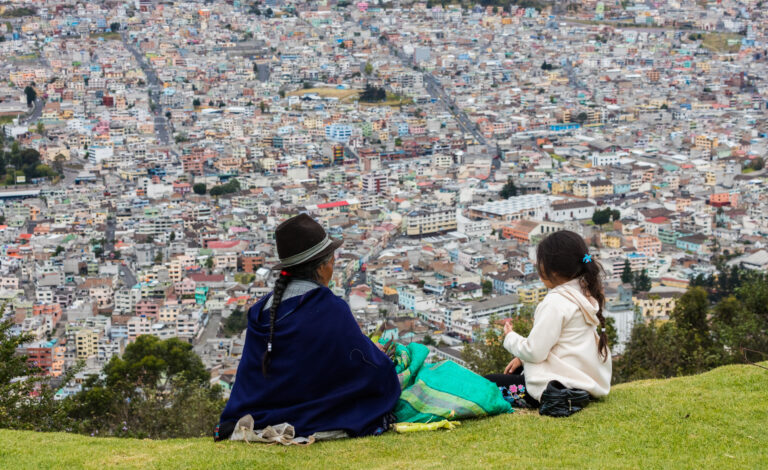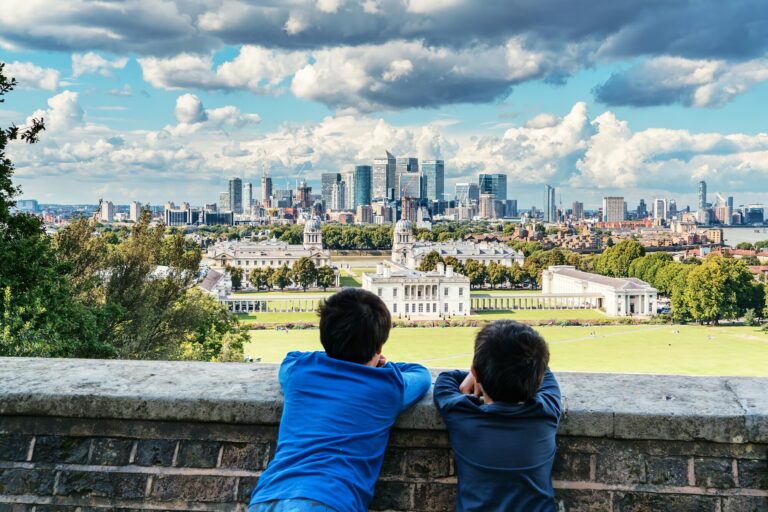
Buen Vivir: The ‘Good Life’ for People and Planet – Part One
Buen Vivir is an alternative development model gaining popularity in South America. Originating from indigenous cultures, it emphasises harmony with nature as key to the wellbeing of the community. Can Buen Vivir operate in practice? And how does population growth factor into this eco-centric approach?
We continue our series exploring alternative economics models. Here, in the first of two parts, we look at Buen Vivir.
Living well
The Spanish phrase “Buen Vivir” loosely translates into English as “Living Well.” It comes from the concept of Sumak Kawsay from the original Quechua, an indigenous people of South America, expression.
Buen Vivir is a concept that puts forwards a more eco-centric form of development. It demands an ethically different relationship with the environment, with a model that prioritises ecological balance over relentless growth. Buen Vivir incorporates ideas of de-growth and a stern critique of extractivism, a model that sees the natural world largely as an inexhaustible supply of resources available for exploitation.

The Buen Vivir movement in South America comes in response to years of colonial and neocolonial rule. This rule was based on the exploitation of natural resources causing environmental degradation and detrimental effects on the indigenous communities living in areas rich in oil, gas and minerals.
The excessive and unbridled industrialization resulting from Western accumulation models does not offer humanity a solution”
David Choquehuanca Céspedes, Vice President of Bolivia
In Bolivia and Ecuador, indigenous peoples represent a large proportion of the population. After years of indigenous groups campaigning and with support from political leaders, Ecuador in 2008 and Bolivia in 2009 revised their state constitutions to enshrine the concept of Buen Vivir.
The Preamble of the Ecuadorian Constitution states:
We decided to construct a new form of citizen co-existence, in diversity and harmony with nature, to reach ‘el buen vivir, el sumak kawsay’.”
The adoption of Buen Vivir into the constitutions of Bolivia and Ecuador was an embrace of indigenous cultures. It recognised plurinational states and regarded nature as a legal entity that has rights.
The ‘Good Life’ for All
The concept of Buen Vivir is still evolving, and people are still developing its practical implementation. Buen Vivir offers a strong criticism on the western model of sustainable development that typically focuses on costs to improve wellbeing indicators such as health, education, gender equality etc.
Drawn and evolved from South America’s indigenous cultures, it has emerged as a lived practice against commodification. With Buen Vivir, wellbeing is considered not in relation to the individual, but the individual within a community in relation to the natural environment, aiming for harmony with nature and condemning the excessive exploitation and extraction of natural resources.

Buen Vivir is rooted in communitarian thinking, the key principles being:
- A criticism of the consumer and individualistic society.
- A proposal for ecological awareness that emphasises the need to build a harmonious relationship with nature.
Living Well – A Bolivian Viewpoint
To further outline the concept of Buen Vivir, here’s is an extract describing the concept from the “Living Well” – a Bolivian viewpoint paper:
“Living Well is not the same as living better, living better than others, because in order to live better than others, it is necessary to exploit, to embark upon serious competition, concentrating wealth in few hands. Trying to live better is selfish, and shows apathy, individualism. Some want to live better, whilst others, the majority, continue living poorly. Not taking an interest in other people’s lives, means caring only for the individual’s own life, at most in the life of their family…”
“Our Living Well proposal emphasizes on harmony between humans and with nature, and the preservation of ‘natural capital’ as primary concerns. It is well known that the protection and preservation of balance in the natural world, including all its living beings, is a primary goal…”
“Among presently over-consuming societies, less really will be more. Basic compliance with Living Well conditions include sufficient food, shelter, clothing; good health and the values of strong community engagement; family security; meaningful lives; and the clear presence and easy access to a thriving natural world.”
The elements of Buen Vivir
The government of Bolivia has set out ten key elements necessary to achieve Buen Vivir with its paper on Saving Planet Earth to Save Humanity:
- Eradicate the capitalist model.
- Denounce and end wars.
- Develop relations of coexistence, not subjection, among countries. A world without imperialism or colonialism.
- Water is a human right, and its privatization must be prevented, since water is life.
- Development of environmentally friendly energy, to end the squandering of energy.
- Respect for Mother Earth.
- Basic services, such as water, education, health, communication, and collective transportation should be borne in mind as human rights. They cannot be a private business, but rather a public service.
- Consume what is necessary, prioritize what we produce and consume what is produced locally. Put an end to consumerism, waste and luxury
- Promote diversity of cultures and economies.
- Live well in harmony with Mother Earth, which means not living better at the expense of another.
_________________________________________________
This is part one of Buen Vivir: The ‘Good Life’ for People and Planet.
Read part two here.



